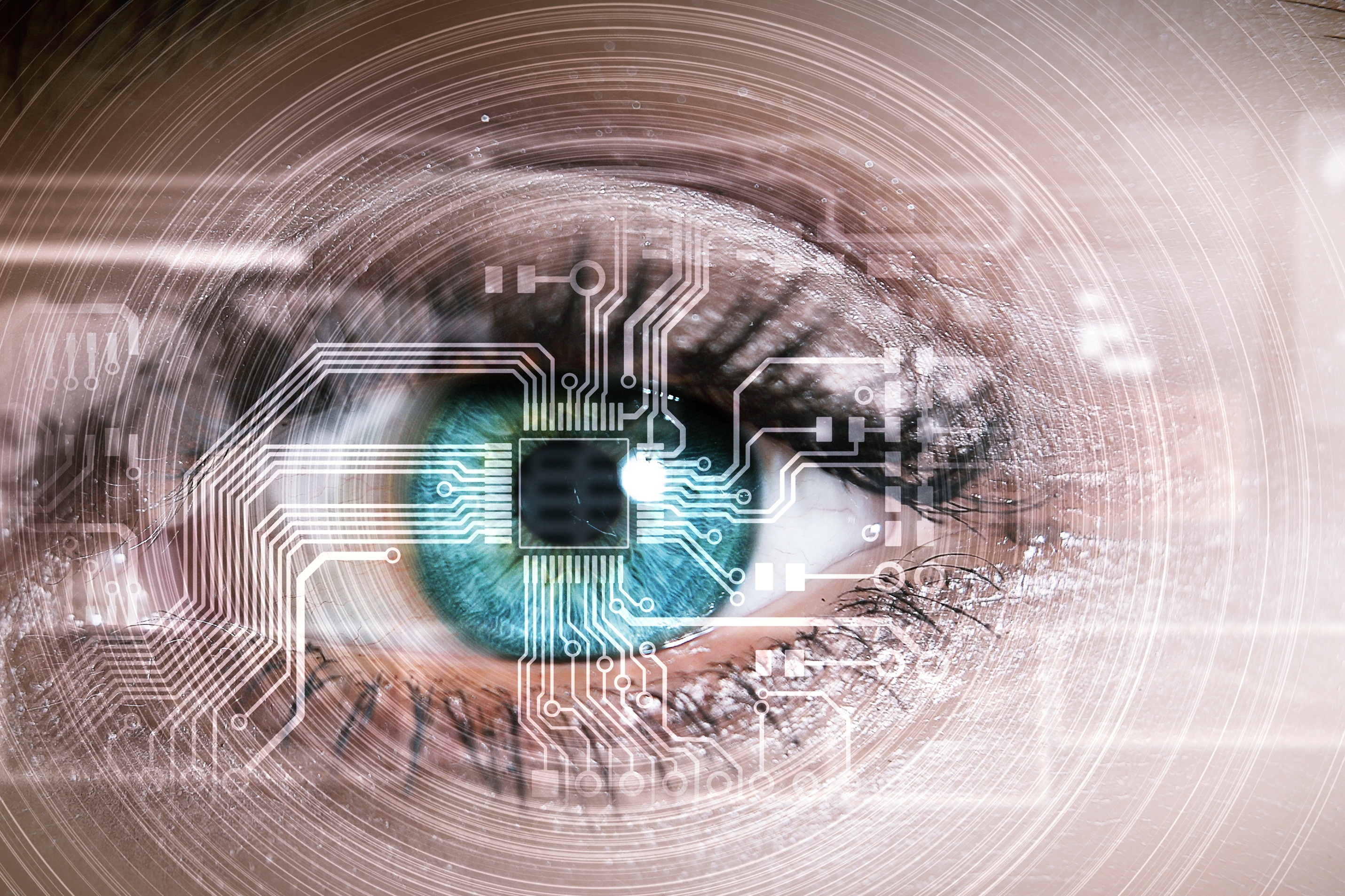The human eye is one of our most important organs since it allows us to navigate throughout our daily lives while being able to see and perceive our surroundings. Although there are clearly many people worldwide who are able to live functional lives without their sense of sight, it can be very easy to take this sense for granted.
Your eyes are not very simplistic in design, and there are various parts that work together to allow you to have your sense of vision. Considering how fragile each of the parts and functions of the eye can be, it is very easy for us to take them all for granted. On this page, we will break down each of the parts and functions of the eye before giving you some tips on keeping your eyes healthy and working properly.
Top Related Article: Eye Function And Factors That Effect Eyes
Eye Parts and Functions: Major Parts of the Eye
For starters, it’s important that there are many eye parts and functions to look at. If you want to understand how the eyes work, and accordingly, the ways in which you can keep them healthy, it’s important to know basic eye anatomy. Although many people think that there are very few eye parts and functions, our eyes tend to be a lot more complicated than we may perceive them to be. Here are all the major parts of the eye that we will discuss.
- Aqueous humor
- Choroid

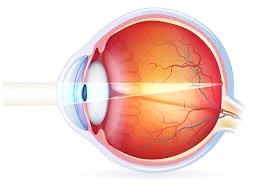
- Ciliary body
- Conjunctiva glands
- Cornea
- Iris
- Lacrimal & Meibomian glands
- Lens
- Macula
- Optic disk
- Pupil
- Retina
- Sclera
- Vitreous humor
Back in school, you probably heard of a few of these. Parts like the iris, lens, and pupil tend to be common knowledge. As we can see, though, there are various parts of the eye that you need to be aware of if you wish to know the many eye parts and functions. Since it is impossible to understand all these parts at once, and how they work together, it’s important to study them individually.
Related: Eye Anatomy
Eye Parts and Functions: Detailed Descriptions
To understand the many different parts of the eye and their functions, it’s important for us to break them down individually. This way, you can leave this page feeling much more informed about the complexities of eye anatomy and how to keep your eyes healthy and working properly. Throughout the following section, you will find a complete description of each of the major eye parts and functions.
Aqueous Humor
The aqueous humor is one of the most important parts of your eyes’ health. In fact, it actually populates a large portion of your inner eye. Aqueous humor is a transparent water-like fluid which dwells inside the anterior and posterior chambers of the eye. It helps to keep your eye intraocular pressure at an equilibrium. However, there are various aspects of the aqueous humor’s full purpose.
The aqueous humor also provides your eye with amino acids and glucose to keep them nourished. Just like your body needs lots of healthy nutrients to keep you active, so does your eye. An additional crucial function of the aqueous humor is a role in the immune system. Immunoglobulins located within the liquid help to keep your eye free of harmful invaders.
Choroid
The choroid is another commonly bypassed part of the eye in many entry-level biology courses. Since there are many parts of a human eye and their functions are numerous, the choroid can be a part which is perceived as less relevant. However, in reality, this is not the case at all. The choroid is a thin layer of tissue which is located right above the visible parts of your eye that you see in the mirror. Specifically, between the retina and sclera.
The choroid contains tissues to connect your eye together, and is also filled with blood vessels to help promote easy blood flow to your eyes. Of course, this means that the choroid also plays in a critical role in helping your eyes to remain oxygenated and full of healthy nutrients. Without the choroid or its proper functioning, many parts of your eye can become malnourished and even defective.
Ciliary Body & Ciliary Muscle
The ciliary body (which also includes the ciliary muscle) is an important part of your eye health since it is the part of your eye which produces the aqueous humor. Accordingly, this part of the eye has a crucial role in helping maintain the proper nourishment of your eyes. The ciliary body also surrounds the iris, but is not visible since it is located behind the sclera.
The ciliary muscle is one of your eyes’ most important parts since it is the muscle which allows your lens to focus and change shape. This makes the ciliary muscle one of the most important mechanisms for ensuring that your eyes see objects clearly and properly. After all, the lens is what focuses light so that you can clearly see what is around you without a blurry mess of light.
Conjunctiva
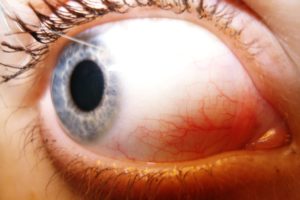

The conjunctiva works hand-in-hand with the glands that make your tears. Of course, both of these are natural protectants of your eye health. Without the conjunctiva, multiple structures like the sclera and cornea would be left vulnerable. Most people may instantly recognize conjunctiva as being the location where you can develop conjunctivitis (or pinkeye). Imagine how terrible this condition could be if the conjunctiva wasn’t there as a crucial line of defense.
Cornea
The cornea is one of the most commonly known and understood eye parts and functions since it is one of the most visible parts of the eye in the first place. The cornea is your eye’s outermost layer. It has a clear surface in the shape of a dome. Although it clearly is one of the eye’s primary defenses from foreign invaders, it also helps you to focus your vision. The cornea also blocks UV light with short wavelengths from entering your eye.
Unlike most parts of your body, the cornea can function properly without ever receiving any blood flow. However, this doesn’t mean that there is no form of nourishment that it needs to remain healthy. The cornea stays healthy and functioning well as long as you have plenty of tears flowing through your eyes. Of course, tears are constantly produced and distributed around your eyes to keep them moist and lubricated.
Iris
More than likely, you have noticed that the pupil of your eye expands when it is dark. When it bright, the pupil of your eye will shrink. This is important for ensuring that your eyes don’t take in unhealthy levels of light. The part of your eye which controls the diameter size of your pupil is the iris.
When you describe what color your eyes are, you are actually describing the color of your iris. After all, the majority of the space that makes up your eye doesn’t actually have this same color. Accordingly, the iris is important for controlling the size of your pupil, as well as to provide you with your eye color.
Lacrimal & Meibomian Glands
When we get sad, one of the most common human reactions is to cry. However, the liquid tears that come out when you cry are not just produced out of thin air. Tears are also an important part of your eye health since they keep them lubricated and moist. As you blink, new tears are spread all across the surface of your eye with the help of your eyelids.
However, you may not be aware that there are certain glands which actually create your tears. These are called the lacrimal and meibomian glands. When you have a dysfunctional tear gland, you will quickly get uncomfortable symptoms of dryness, which can lead to common problems like blepharitis.
Lens
The lens plays on important role in bending and focusing light as it enters the eye. Much how glasses are designed to bend light so that it focuses clearly, the lens is your eye’s natural glasses. As we know, though, they can also become dysfunctional and not able to focus light properly. This is where glasses come in to play.
The lens of your eye also works with the cornea to produce clear images as you look at them. However, it’s important to note that not all parts of the electromagnetic spectrum are processed by the lens. The eyes are only able to perceive a small chunk of what could be measured and seen with modern scientific tools. UV light which is specifically between 300 – 400 nm is blocked by the lens.
Macula
Without the macula, it would be very difficult for us to focus on what is straight in front of us. The macula also allows our eyes the detailed vision which is necessary for activities like reading or writing clearly. Additionally, the macula plays a crucial role in helping us to see and describe our surroundings with colors.
The macula is a small area in the middle of the eye which can be easily located since it looks like a hole. When the macula stops functioning properly, you will immediately know. After all, a dysfunctional macula can result in the loss of your central vision. Accordingly, the macula is one of the eye’s most important components.
Optic Disc
For us to see what is around us, light entering the eyes is only part of the process. Without the information traveling through your nerves to your brain, you would never be able to see in the first place. The optic disc is the back of your eyes where the information received by your eye is able to leave before traveling to your brain. Specifically, the optic disc carries over 1 million nerves from the eye on over to your brain.
Outside of visual information that needs to exit through the optic disc to your brain, there are also blood vessels which transport blood in and out of your eyes through the optic disc. In other words, the optic disc functions as the border which controls what comes in and out of the back of your eyes.
Pupil
The pupil is a crucial part of your eye’s proper functionality since it what allows light to enter into the eye to be focused and processed. The pupil is the circular black hole located right in the front and center of your eyeball. The light rays that enter the pupil are absorbed before being processed to produce a picture of what you are looking at.
Your pupil can also increase and decrease in size naturally. As your pupil becomes larger, you will be able to see much better when it is dark since it allows more light to enter into the eye. However, the pupil will naturally respond to bright lights by constricting down to minimize the amount of light to enter. Proper functioning of your pupils helps you to see objects without eventually harming your eyes.
Retina
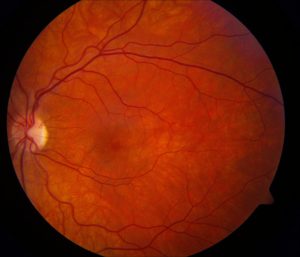

There are also blood vessels which run through the retina to help nourish the various parts of your eyes. When light strikes the retina, this is what causes your nerves to act, before eventually sending the picture of your surroundings to your brain so that you can actually see them. Due to its size and role in many parts of vision, the retina is one of the most important parts of your eye.
Sclera
At the Battle of Bunker Hill during the American Revolutionary War, there was an order given to the American soldiers to hold their fire until they could see the “whites of their eyes.” The part of the eye that is being described here is the sclera. The sclera is the outermost layer of the eye which gives it that the white color that is on the edges.
The sclera also makes up the largest portion of your eyes’ outer surface, covering about 80% of your eyeball. It ends at the optic nerve, which is located on the outermost portion on the back of your eyes. The sclera works with the intraocular pressure of your eyeball to maintain the natural shape of your eye. It also protects the eye from foreign agents and attaches to the muscles which move your eyes around.
Vitreous Humor
The vitreous humor is very similar to aqueous humor since it is a transparent water-like fluid which is located within your eye. However, the main difference is where it is located. The vitreous humor is located in the spaces of the eye between the lens and retina.
Another big difference between the aqueous humor and the vitreous humor is that it is not naturally cleaned out and replenished. Accordingly, having a diluted vitreous humor will require surgery to get the liquid back to normal. The vitreous humor is an important agent in keeping the intraocular pressure and shape of your eye constant.
Keeping Your Eyes Healthy: Tips for Maintaining Healthy Vision
Now that we have described the most crucial parts of your eye, what they do, and why they are important for the health of your eyes, let’s go ahead and now break down some methods that will help you keep your eyes healthy for as long as possible. Anybody who follows these tips will definitely notice some great results.
Related Article: Vision Care
Of course, there are certain conditions which can even develop even among those who take every possible step that they can to ensure their eyes stay healthy. Accordingly, consider these tips as a set of ideas to consider, and not as a verbatim guide for avoiding any sort of eye or vision problem.
1. Receive Routine Eye Exams
Everyone should receive eye exams every year or so. There is always a benefit that comes when you consult an expert on their field of expertise.
Since an optometrist completely understands all the parts of the eye and their functions, they are a wonderful source for quick information and diagnoses. A visit to the optometrist will also allow you to have detailed information on the health of your eyes, and it’s a great place for getting prescriptions for glasses, and is also where you can fully assess the functionality and health of each of your eye parts and functions.
2. Do Eye Exercises
Just as you may choose to exercise other parts of your body, doing eye exercises is can be very beneficial toward your eye health. Although there are many eye parts and functions, focusing your vision requires the use of muscles. Accordingly, many people do eye exercises to keep their eye muscles in proper shape.
There are many eye exercises which you might consider doing. For example, you might choose to work on the muscles which you use for blinking, the ones you use for focusing on far and near objects, or the ones you use to move your eyes around. Although eye exercises may not actually improve your quality of vision, they can help increase the strength of their muscles.
3. Remove Crust Buildup Around your Eyes
Keeping your eyes clean is one of the simplest ways that you can keep them healthy. Sometimes, the glands which produce tears for your eyes can clog up, leaving crusty flakes around your eyes. Of course, this can lead to a much bigger problem if left untreated. Not to mention, there will be a lot of pain and discomfort that can come along with having dry eyes.
One of the easiest ways to ensure that your eyes stay moist and lubricated is to do a daily check to see if there is any buildup of crust around your eyes. To remove dry crust around your eyes, simply grab a tissue and carefully pick it out of your eye before it can lead to further problems.
4. Try Some Warm Compresses
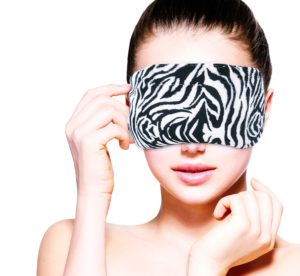

Warm compresses are also very simple to do. All you need is a clean towel and some warm water. Simply soak the towel in warm (not hot) water and then lightly compress it on your eyes for 15 minutes or so. Of course, eye treatment like this will have various therapeutic effects outside of simply making your eyes feel better.
5. Know Your Family’s Eye Health History
Genetics can actually play a role in your eye health. The funny thing about genetics is that it can pass along undesirable things such as traits which lead to complications. Glaucoma is one condition which is particularly common to have if someone else in your family has it.
Accordingly, one of the most important methods for staying on top of your eye health is to research your family history a little bit and discover if anybody related to you has ever had a particular eye problem. If you are limited in your knowledge and means for accessing your family’s eye health history, you can go in to receive genetic testing. Although this can help identify whether or not you have genes that contribute to a disease, it is best done to confirm if a certain condition is hereditary or not, and what the prognosis is.
6. Use Sunglasses When the Sun is Bright
Sunglasses can serve a much more practical purpose than simply assisting with how you look. For starters, certain sunglasses actually help block harmful UV rays from entering your eyes. Accordingly, they are a great tool to use for avoiding the development of cataracts.
Sunglasses also help your eyes to adjust to bright surroundings without the shock and potential damage which might otherwise ensue. Many eye parts and functions can be harmed by bright lights and harmful UV rays. Although certain parts of the eyes also block UV rays, sunglasses will add an extra layer to ensure an optimum level of protection.
Related Article: The Importance of Eye Care And Protection
7. Stop Smoking Cigarettes
Everybody needs to be aware of the health risks associated with smoking cigarettes. Outside of the immediate damage to your lungs, cigarette smoking can also have an effect on eye parts and functions. Anybody who is serious about maintaining the health of their eye parts and functions needs to stay away from smoking cigarettes.
In a nutshell, smoking can increase the risk of cataracts, macular degeneration, glaucoma. The smoke from cigarettes also can dry out your eyes, leading to a risk of contracting dry eye syndrome. Although it may not seem related to your vision, the bodily destruction caused by cigarette smoking also has an effect on your eye parts and functions.
8. Eat a Balanced & Healthy Diet


Although your eye parts and functions can clearly continue if you have bad eating habits, continuing to do so can have negative impacts in the future. Our eyes love nutrients like omega-3 acids, vitamin C, vitamin E, lutein, zinc, and so on. To get these nutrients, you might consider adjusting your diet or simply putting a new supplement into your daily diet which has these ingredients.
9. Optimize Computer Settings & Office Space
This is especially relevant for those who work in an office with a computer. There are many variables that affect your eye parts and functions that anybody who works in this type of atmosphere needs to consider. For starters, make sure that you put your monitor in a position slightly below eye level, and at least 20 inches away from your eyes.


10. Watching TV & Using Electronics Properly (20-20-20 Rule)


If you are going to watch the television or use electronic devices for a long period of time, follow the 20-20-20 rule. Every 20 minutes that you use an electronic device, take a 20-second break to focus on something which is at least 20 feet away. This will help you to prevent yourself from ever having uncomfortable eye strain symptoms which can affect many different eye parts and functions.
Eye Parts and Functions: Major Points & Summary
Since there are many parts of the eye and their functions are not all entirely similar, anybody who is serious about maintaining their vision and overall eye health should spend some time informing themselves about how your eyes properly work. On this page, we described the many parts of a human eye and their functions so that you can start doing everything possible to keep your vision as clear and crisp as possible.
Although there are many parts and functions of the eye, one can simply follow the tips and exercises described above to keep their eyes healthy. In any case, whenever you are unsure about a certain problem with your eyes, an optometrist is the best possible source of information for assistance.
